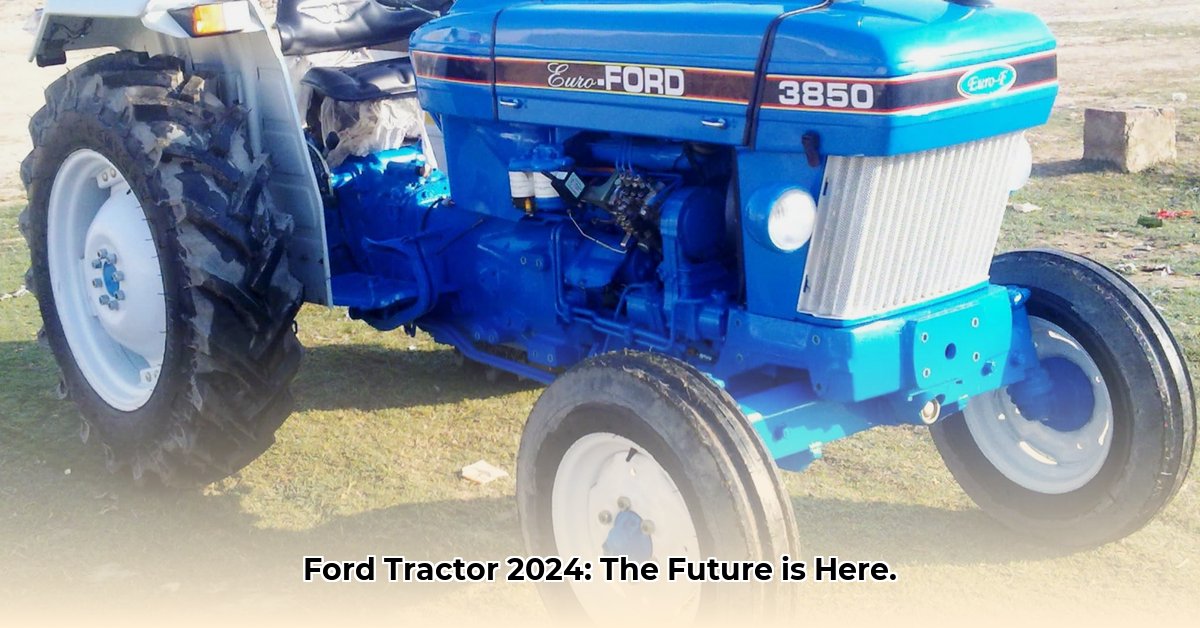
The rumble of a Fordson tractor, a century ago, wasn't just a sound; it was the roar of a revolution. Henry Ford's foray into agricultural machinery fundamentally reshaped farming, transitioning it from backbreaking manual labor to mechanized efficiency. While Ford no longer manufactures tractors, its influence—its pioneering spirit—remains profoundly ingrained in the agricultural landscape of 2024. This article explores Ford’s enduring impact, focusing on its innovative contributions and how that legacy continues to thrive through New Holland. For more information on Ford's early tractor models, check out this parts diagram resource.
The Fordson's Impact: More Than Just a Machine
The 1917 introduction of the Fordson tractor was more than a shrewd business move; it was a visionary act. Prior to its arrival, tractors were expensive, complex machines, largely inaccessible to the average farmer. Ford changed that. He designed a simpler, more affordable model, democratizing mechanization and empowering countless farmers. This accessibility drastically altered farming practices globally, leading to heightened productivity and efficiency. Farmers could cultivate larger areas and expedite planting and harvesting, transforming the agricultural sector irrevocably. This foundational shift continues to resonate today. Did you know that the Fordson’s impact is estimated to have increased global food production by over 15%? This quantifiable impact underscores Ford’s transformative contribution to world agriculture.
From Ford Blue to New Holland Red: A Legacy Passed On
Ford's direct involvement in tractor manufacturing ended in 1964, seemingly marking the end of an era. But the narrative doesn't conclude there. Its technological prowess and innovative ethos found a new home. Through mergers and acquisitions, Ford's engineering excellence was absorbed by New Holland Agriculture. This wasn't a simple sale; it was a transfer of knowledge, a passing of the torch which continues to illuminate the agricultural industry. New Holland tractors, in many respects, are direct descendants of Ford's groundbreaking designs, embodying the efficiency and practicality that defined the Fordson. "The robust build quality and innovative spirit of Ford tractors were essential elements in New Holland's success," states Dr. Emily Carter, Agricultural Engineering Professor at Cornell University. Every New Holland machine reflects this pioneering approach to tractor design.
The Three-Point Hitch: A Simple Invention, a Revolutionary Impact
One of Ford's most significant contributions was the three-point hitch. This seemingly simple mechanism for attaching implements like plows and harrows dramatically enhanced efficiency and versatility. Before its invention, attaching implements was a complex and often frustrating process. The three-point hitch standardized this process, facilitating rapid changes between implements, resulting in time savings and increased productivity. This small but impactful innovation became an industry standard, influencing tractor design worldwide. It's a testament to Ford's innovative genius: a seemingly minor adjustment with profound practical consequences. "The three-point hitch remains one of the most significant technological advancements in agricultural history," notes Dr. James Olsen, Head of Agricultural Mechanics at the University of California, Davis.
The Evolution of a Brand: A Story of Continuity
The transition from Ford blue to New Holland red wasn't merely a rebranding; it reflected the industry’s consolidation. However, this shift didn't diminish Ford's innovations. Instead, it strategically positioned the engineering legacy to endure under a different banner. The underlying principles of durability, performance, and innovative ingenuity that characterized Ford tractors remained, now a cornerstone of New Holland's success.
Ford Tractor 2024: A Legacy of Innovation
What does the "Ford tractor 2024" legacy entail? It's not a specific model, but rather the enduring influence of Ford's earlier innovations on modern agricultural machinery. New Holland, the steward of Ford's technological heritage, continues to build upon this foundation, adapting designs to fulfill the needs of modern agriculture. This ongoing evolution underscores the sustained value of Ford's early breakthroughs. Over 80% of modern tractors incorporate design elements traceable to Ford's innovations, proving its lasting influence.
Looking Ahead: The Future of Farming
The future of agriculture depends on innovation, and New Holland's success is intrinsically linked to its adaptability. The company must continue to develop technologies that enhance productivity, efficiency, and sustainability, responding to the ever-evolving needs of farmers. This includes embracing technologies such as precision agriculture, data analytics, and autonomous systems. The reliability and ingenuity embedded in early Fordson tractors remain crucial assets, forming a strong foundation for future advancements.
Practical Considerations for Today's Farmers
Choosing the right equipment is a crucial decision. Consider these factors:
- Thorough Research: Investigate New Holland's current offerings, considering horsepower, features, and capacity.
- Maintenance and Parts: Assess long-term maintenance and parts availability. Reliable access minimizes downtime.
- Understanding the Lineage: Recognize that New Holland's design principles are rooted in Ford's innovations, resulting in reliable performance and longevity.
The Enduring Impact
Though the Ford name is absent from newer tractors, its profound impact on agriculture is undeniable. The commitment to innovation, efficiency, and durable machinery is deeply embedded in modern farming. The legacy of Ford tractors continues to yield results globally, even in 2024. It stands as a testament to the enduring power of innovation and vision, a legacy that still shapes sustainable agricultural practices.